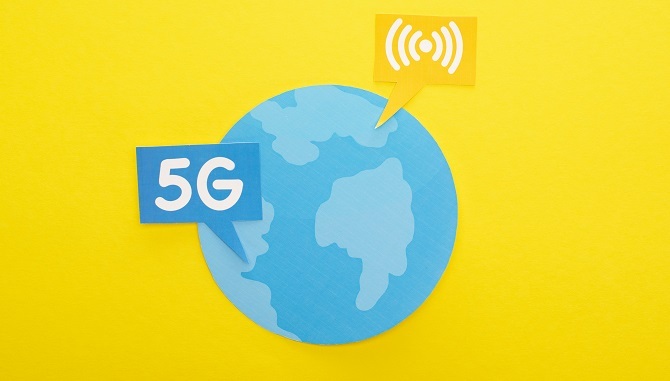
 Data Structure
Data Structure Networking
Networking RDBMS
RDBMS Operating System
Operating System Java
Java MS Excel
MS Excel iOS
iOS HTML
HTML CSS
CSS Android
Android Python
Python C Programming
C Programming C++
C++ C#
C# MongoDB
MongoDB MySQL
MySQL Javascript
Javascript PHP
PHP
- Selected Reading
- UPSC IAS Exams Notes
- Developer's Best Practices
- Questions and Answers
- Effective Resume Writing
- HR Interview Questions
- Computer Glossary
- Who is Who
What is the full form of GPRS?
Introduction
General Packet Radio Service (GPRS) is a mobile data service that offers cellular network users access to the internet. In comparison to the previous circuit-switched data services, GPRS allowed for the transmission of data in small, packetized forms, which was a significant improvement.

This made data services more accessible and affordable by allowing users to be charged for data usage based on the volume of data transmitted rather than the length of the connection. For low-bandwidth applications like machine-to-machine communication, GPRS is still in use today as a stepping stone to the faster 3G and 4G mobile networks. Additionally, GPRS paved basis for the emergence of more sophisticated mobile data services like EDGE, HSPA, and LTE.
Technical Aspects of GPRS
GPRS creates a connection to the Internet that's always on and ongoing. It works by sending data in packets instead of keeping a channel open the whole time like older systems. This packet system uses radio waves better than older circuit-based systems. GPRS runs on the same radio frequencies as GSM but uses a different coding method allowing for faster data speeds. This means you can browse websites, send and receive emails, and use other data apps whenever you want.
The technical aspects of GPRS include the utilization of the Internet Procedure (IP) for data transmission, which allows seamless incorporation with other IP-primarily based networks. It additionally employs a variety of radio resource administration strategies, like dynamic allocation of radio channels, to make sure environment friendly use of radio resources and maximize community capability.
GPRS supports a number of coding schemes for data compression and error correction, making it possible for faster data transfer charges and better community performance. Additionally, GPRS supports several security mechanisms, like encryption and authentication, to guarantee the security and privacy of consumer data.
Advantages of GPRS
Some of the key benefits of GPRS technology include faster data transfer speeds compared to traditional circuit-switched networks, lower costs due to its packet- switched design, constant connectivity enabling users to remain online even when inactive, support for multiple services like email, web browsing and apps, scalability to accommodate high volumes of users, compatibility with a wide range of mobile devices, and international roaming capabilities for data access abroad. GPRS provides advantages like
Higher transmission rates, enabling faster internet access
Cost savings since it only uses network resources when transmitting data packets
Constant connection to the internet and services
Ability to support various services beyond web browsing
Ability to scale up to serve a large volume of users at high speeds
Works with most smartphones, tablets, and other mobile devices
Allows international roaming for data use while traveling abroad
Limitations of GPRS
While GPRS was an improvement over traditional circuit-switched data services when it was first introduced, it also has some drawbacks that limit its capabilities, especially compared to modern wireless data technologies.
GPRS has a rather sluggish maximum data rate of only 114 kbps, which pales in comparison to LTE, 5G, and other faster wireless data standards. This slow speed means that web browsing, app usage, streaming media, and other data-intensive tasks are rather laborious and time-consuming when using GPRS.

The actual data rate of GPRS tends to fluctuate based on a number of factors, including signal strength, how busy the network is at the time, and how far one is located from the base station. GPRS data speeds can be unpredictable and inconsistent in practice, leaving you waiting and wanting more speed! GPRS also suffers from annoying latency
issues, causing delays for real-time activities like gaming online, video chatting with friends, and streaming movies and shows. Security can also be iffy since GPRS uses a shared network, putting your data at risk from interception and hacking. While encryption is used, it's not foolproof.
GPRS coverage is often more limited than voice coverage too, so you might lose your data connection in places where you still have a phone signal. Plus, GPRS requires compatible devices and networks, which can be tough in areas where the tech isn't widely available yet. Finally, GPRS tends to suck the juicy battery life right out of your mobile device, especially when downloading lots of data. It can quickly drain the battery on devices that rely on GPRS.
Conclusion
In conclusion, GPRS was a huge leap forward in the evolution of mobile communication technology. It introduced the concept of sending data over cellular networks in small packages, enabling faster and more efficient data transfer. This set the stage for modern mobile data services.GPRS had many benefits over earlier technologies. It offered higher data speeds, used network resources more efficiently, and cost less. However, it also had some downsides like limited bandwidth, slow response times, and lower security.
FAQs
Q1. What is the GPRS's top data transfer rate?
GPRS can transport data at a maximum speed of 171.2 kbps.
Q2. Is GPRS still in use?
Although newer mobile data technologies like 3G, 4G, and 5G have mostly superseded GPRS as an older technology, it is still utilised in some locations where faster networks are not available or cost-effective.
Q3. Is GPRS encrypted?
Although GPRS does not have robust security features by itself, it can be used in conjunction with VPNs and encryption to ensure secure data transport.

